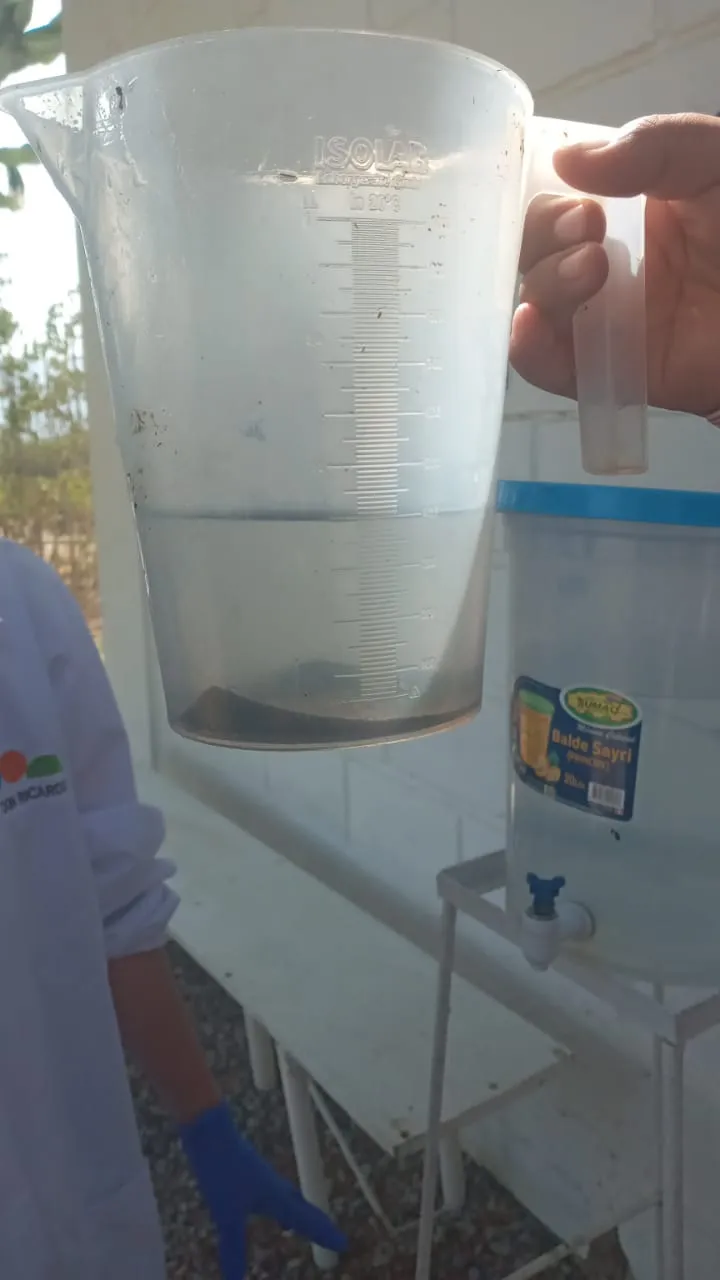
Last week we visited our friends from Agrícola Don Ricardo, a company located in Ica dedicated to the production of grapes, citrus, avocado and blueberries.
They invited us to their laboratory to share with us their purity test results that they themselves carry out on the products they purchase, this time on organic fertilizers. During our visit they showed us how they perform this test and here we share with you part of the protocol. Which is very useful and easy to do.
To begin with, the impurities are considered inert material, this means that they are not part of the fertilizers such as sand and pebbles.
The first step is to start with a sample of the fertilizer based on which the impurity is going to be calculated, in this case 1 Kg is taken. The second step consists of washing the sample in order to only keep the inert material mentioned, since being heavier, compared to the fertilizer itself, it will be able to separate easily.
After having been left alone with the inert material, it is going to be dried in order to later weigh it. This being the last step, since once the weight is obtained, it is possible to determine what percentage of the initial sample (1 Kg) turns out to be impurity.

La semana pasada visitamos a nuestros amigos de Agrícola Don Ricardo, empresa ubicada en Ica dedicada a la producción de uva, cítricos, palto y arándano.
Nos invitaron a su laboratorio para compartirnos sus resultados de pruebas de pureza que ellos mismos realizan a los productos que adquieren, en esta oportunidad a los fertilizantes orgánicos.
En nuestra visita nos enseñaron cómo realizan esta prueba y aquí compartimos con ustedes parte del protocolo. El cual es muy útil y sencillo de hacer.
Para comenzar, las impurezas son consideradas material inerte, esto quiere decir que no forman parte de los fertilizantes como por ejemplo arena y piedritas.
El primer paso es comenzar con una muestra del fertilizante en base al cual se va a calcular la impureza, en este caso se toma 1 Kg . El segundo paso consiste en hacer lavados a la muestra con la finalidad de solo quedarse con el material inerte mencionado, ya que al ser de mayor peso, a comparación del fertilizante en sí, este va a poder separarse fácilmente.
Después de haberse quedado solo con el material inerte se va a proceder a secar para posteriormente pesarlo. Siendo este el ultimo paso, ya que una vez obtenido el peso se puede determinar que porcentaje de la muestra inicial (1 Kg) resulta ser impureza.


